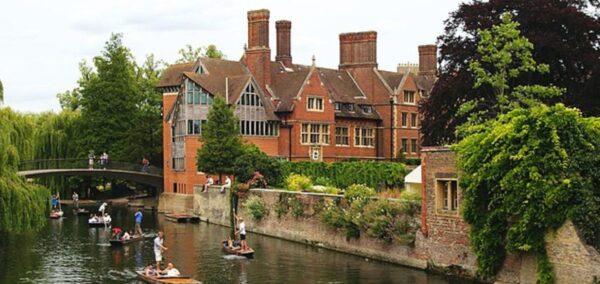Revealed: The UK unis where students are most scared to walk alone at night in 2024
Number one actually isn’t London
Walking alone at night is a serious concern for students, whether your friends left you at the club or you’re fed up of a party and can’t catch an Uber. The security training company Get Licensed worked out the UK unis where students are most scared to walk alone at night in 2024.
Durham is often slated for its lack of nightlife, but this makes the city the safest to walk through at night. 76 per cent of people at Durham feel safe walking around the city by themselves in the dark.
Despite their bougie reputation, many Russell Group unis are in cities that aren’t so safe to walk through alone at night. The University of Southampton and the University of Manchester are both in cities where only a third of people feel safe walking along at night.
Students are most scared to walk alone at night in Birmingham, which is home to the Russell Group University of Birmingham as well as four other unis, and Coventry, which is (confusingly) the location of the University of Warwick as well as Coventry University.
So, here are cities with UK unis ranked by the percentage of people that feel safe walking alone at night in 2024:
20. Durham
Durham University
76 per cent
19. York
University of York, York St John University
69 per cent
18. Bath
Bath Spa University, University of Bath
65 per cent
17. Lincoln
Bishop Grosseteste University, University of Lincoln
64 per cent
=15. Edinburgh
University of Edinburgh, Heriot-Watt University, Queen Margaret University, Edinburgh Napier University
62 per cent
=15. Sunderland
University of Sunderland
62 per cent
14. Exeter
Most Read

Let’s be real, most of the Exetaaaah students are getting Ubers back from the club
University of Exeter
55 per cent
13. Newport
University of South Wales
52 per cent
12. Newcastle upon Tyne
Newcastle University, Northumbria University
51 per cent
11. Reading
University of Reading
46 per cent
=9. Belfast
Queen’s University Belfast
Ulster University
42 per cent
=9. Glasgow
University of Glasgow, University of Strathclyde, Glasgow Caledonian University, Glasgow School of Art, Royal Conservatoire of Scotland
42 per cent
8. Plymouth
Plymouth Marjon University, University of Plymouth
39 per cent
7. London

There are so many unis in London that it took me a small age to type them all out
Birbeck, University of London; Brunel University of London, City St George’s, University of London, Goldsmiths, University of London, Imperial College London, King’s College London, Kingston University, London Metropolitan University, London School of Economics and Political Science (LSE), London South Bank University, Middlesex University, Queen Mary University of London, SOAS, University of London, St Mary’s University, Twickenham, University College London (UCL), University of East London, University of Greenwich, University of Roehampton, University of the Arts London, University of West London, University of Westminster
38 per cent
6. Colchester
University of Essex
36 per cent
5. Manchester
University of Manchester, Manchester Metropolitan University (MMU), University of Salford, University of Bolton, Royal Northern College of Music
33 per cent
4. Southampton
Solent University, University of Southampton
31 per cent
3. Northampton
University of Northampton
30 per cent
=1. Birmingham
Aston University, Birmingham City University, Newman University, University of Birmingham, University College Birmingham
26 per cent
=1. Coventry
University of Warwick, Coventry University, Arden University, Coventry College
26 per cent


















